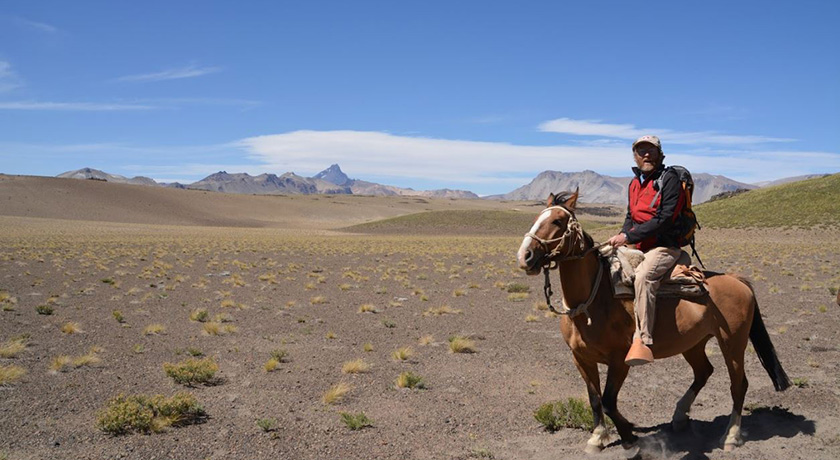
Martyn Unsworth, University of Alberta geophysicist, at Laguna del Maule volcanic field in Chile. Photo by Darcy Cordell.
Much like humans, volcanoes inhale and exhale to a certain rhythm. But picture only ever exhaling… for five years in a row. Enter the mystery of the Laguna del Maule volcanic field in the Andes in Chile where the surface shifts upwards of 30 centimetres a year in comparison to most volcanoes, which move up and down by merely millimetres or centimetres per year.
"Laguna del Maule is just going continuously up, up, up. It could be a sign that eruption is forthcoming," says Martyn Unsworth, geophysics professor in the Department of Earth and Atmospheric Sciences and the Department of Physics. "Something is pushing that up. It could be an increase in the amount of magma (molten rock) underneath, or it could be hot water. We're trying to figure out which of those is the case."
"What's really interesting is that it could be a chance to catch one of these volcanic eruptions before it happens so we can watch everything that happens in the run up. If we have advanced knowledge, we can mitigate the impact on communities." -Martyn Unsworth
To further understand the long-term unrest, Unsworth and his PhD student Darcy Cordell will travel to Chile this week to increase the scientific monitoring of the situation. As a volcanic field, Laguna del Maule does not look like the stereotypical pointed volcano. Rather, it's a ring of small volcanoes that have erupted a lot of lava flow mostly since the end of the ice age. "The other is related to geothermal energy."
Using radio waves to image inside the Earth, Unsworth works like an X-ray technician on the Earth's subsurface, taking scans and generating images to see what goes on underneath. "One reason we are tracking these activities is to understand when a volcano is going to erupt. We are looking for the type of magma and to see how much water there is, because the combination of water and gas will determine whether the magma comes out quietly like a liquid or explodes when it erupts."
Eruptions erase evidence
The challenge with volcanoes as a study subject? Eruptions often erase all evidence that scientists could use to predict future activity. Unsworth is aiming to understand what leads up to eruptions as a way to help communities mitigate impact of the aftermath and sees Laguna del Maule as the perfect opportunity to study those sign of instability in advance.
"What's really interesting is that it could be a chance to catch one of these eruptions before it happens so we can watch everything that happens in the run up. Whereas in contrast, if you go to Pompeii or Yellowstone, you're doing forensic volcanology and most of the evidence has been destroyed by the explosion. If we have advanced knowledge, we can mitigate the impact on communities."
In addition to working to better understand the behavior of the volcano in advance of a potential eruption, Unsworth is also working to aid efforts to build a geothermal power plant in the area. The challenge lies in striking a balance of capitalizing on the geothermal sources in the volcanic field while locating the safest place to build the plant with the least potential for hazard in advance of a future eruption.
Closer to home, Unsworth and colleagues are working to push geothermal energy with its lower carbon footprint as an alternative energy source in Alberta. "There's no one form of alternative energy that's going to solve all problems," says Unsworth. "We have to have a combined system. Wind energy works if it's windy. Solar energy works if it's sunny. Geothermal energy works 24 hours a day."